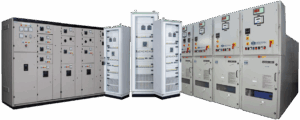In the fast-paced and highly competitive world of logistics and supply chain, effective warehouse management is no longer a choice—it’s a necessity. With growing consumer demands, tight delivery windows, and ever-evolving market dynamics, companies are constantly seeking smarter ways to manage inventory. From automation to real-time data tracking, smarter warehouse management is transforming the efficiency and profitability of businesses around the world. In regions like the UAE, particularly in Warehouse Management in Dubai, innovation and technological integration have become vital tools in achieving operational excellence.
The Importance of Smart Warehouse Management
Inventory management is the backbone of a smooth supply chain. Poor inventory handling leads to overstocking, stockouts, delayed deliveries, and unhappy customers. Traditional manual processes can no longer keep up with the complexities of modern logistics. Smarter warehouse management practices, however, allow businesses to:- Increase inventory visibility
- Reduce operational costs
- Enhance order accuracy
- Improve warehouse space utilization
- Shorten delivery times
Challenges Faced in Traditional Inventory Management
Many companies still rely on outdated practices that hinder growth. These may include:- Manual tracking systems that are prone to human error
- Lack of real-time visibility across the supply chain
- Inaccurate forecasting, leading to inefficiencies
- Disconnected systems with little to no integration
- Inadequate use of storage space, causing congestion or underutilization
Key Strategies for Smarter Inventory Optimization
Implementing smart warehouse management isn’t just about technology—it’s about strategy, processes, and people. Here are the essential pillars of optimizing inventory through smarter warehouse management:1. Embracing Automation and Robotics
Automation is revolutionizing warehouse operations. Automated picking systems, robotic pallet movers, and conveyor belts streamline repetitive tasks, reducing the need for manual labor and increasing speed and precision. In Warehouse Management in Dubai, many logistics hubs and free zones are integrating AI-powered robotics to enhance their capabilities and remain globally competitive.2. Real-Time Inventory Tracking
The use of RFID tags, barcoding, and Internet of Things (IoT) sensors allows businesses to track their inventory in real time. This level of transparency ensures:- Immediate identification of stock levels
- Reduction in misplaced inventory
- Improved forecasting and replenishment planning
3. Warehouse Management Systems (WMS)
A robust Warehouse Management System is the backbone of smart inventory handling. It integrates all warehouse processes, from receiving to shipping, and provides a centralized dashboard for real-time monitoring. A WMS helps:- Streamline workflows
- Optimize picking and packing
- Forecast demand accurately
- Automate reordering processes
4. Data-Driven Decision Making
Big data analytics plays a critical role in smarter warehouse management. By analyzing historical trends and real-time data, companies can:- Identify slow-moving items
- Recognize peak periods
- Anticipate future demand
- Optimize storage zones






